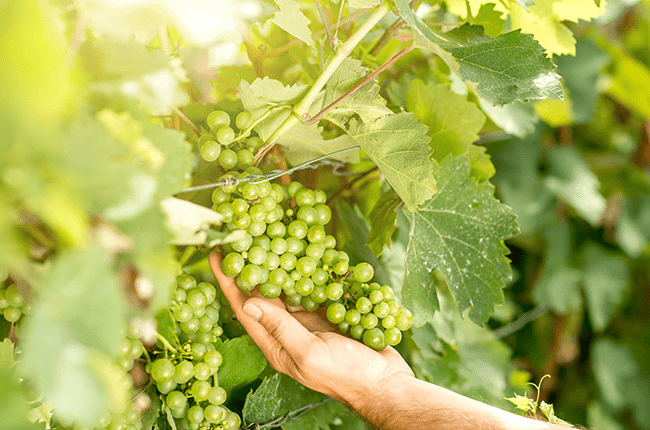
harvest.png
Harvest
Definition: Harvest refers to the process of gathering mature crops or other agricultural products from the field, orchard, vineyard, or garden for human or animal consumption, processing, storage, or sale. Harvesting is a critical stage in the agricultural cycle, marking the culmination of months of planting, nurturing, and growing crops to maturity.
Fall off the barn roof and busted your keister? Life on the farm or ranch can be tough on the bum. Need a break? Laugh it off at FarmerCowboy.com, the #1 farm humor site. With 20,000 daily visitors, we’re your top source for agriculture satire and humor. Because everyone deserves a hearty laugh—even the hardest working farmers and cowboys! Join us and turn those long days into fun tales at FarmerCowboy.com.
Description: The harvest season varies depending on the crop type, geographic location, climate, and agricultural practices. It typically involves the manual or mechanical removal of crops from plants, followed by sorting, cleaning, and transportation to storage facilities, markets, or processing facilities. Harvesting may also involve post-harvest activities such as drying, curing, grading, packaging, and preservation to maintain product quality and shelf life.
Types of Harvest: Harvesting methods and techniques vary widely depending on the crop type, scale of production, and available resources. Some common types of harvest include:
- Manual Harvesting: Handpicking or hand-cutting crops using tools such as knives, sickles, or shears, often employed for fruits, vegetables, herbs, flowers, and specialty crops requiring careful handling or selective harvesting.
- Mechanical Harvesting: Using machinery and equipment such as combine harvesters, threshers, harvesters, or pickers to efficiently harvest large-scale crops such as grains, oilseeds, cotton, sugarcane, and forage crops, reducing labor costs and increasing productivity.
- Animal Harvesting: Utilizing animals such as horses, oxen, or dogs to assist in harvesting tasks, such as pulling carts, wagons, or sleds loaded with harvested crops, especially in small-scale or subsistence farming systems.
- Continuous Harvesting: Harvesting crops in stages or sequentially over time to ensure a continuous supply of fresh produce, such as picking fruits or vegetables as they ripen or mature, allowing for extended harvest periods and market availability.
- Selective Harvesting: Targeting specific parts or varieties of crops for harvest, such as harvesting only ripe fruit or high-quality produce, to maximize yield, quality, and market value while minimizing waste and losses.
- Post-Harvest Handling: Sorting, cleaning, washing, grading, packing, cooling, and transporting harvested crops to storage or markets, ensuring product quality, safety, and marketability while reducing spoilage, contamination, and losses during handling and transportation.
Harvest Management: Harvest management involves planning, coordinating, and executing harvest operations efficiently and effectively to maximize yield, quality, and profitability while minimizing labor, time, and resources. Key aspects of harvest management include:
- Timing: Determining the optimal time to harvest crops based on factors such as maturity, ripeness, weather conditions, market demand, and storage capacity to achieve peak quality and market value.
- Labor: Mobilizing and organizing labor resources, including farm workers, contractors, or seasonal workers, to ensure timely and cost-effective harvest operations, often requiring coordination with local labor markets and regulatory requirements.
- Equipment: Maintaining and operating harvesting machinery, tools, and equipment to minimize downtime, breakdowns, and disruptions during harvest season, including regular maintenance, repairs, and replacements as needed.
- Logistics: Planning and managing logistics, including transportation, storage, and distribution of harvested crops to markets, processing facilities, or storage sites, optimizing supply chain efficiency, and minimizing handling, storage, and transportation costs.
- Quality Control: Implementing quality control measures, such as visual inspections, sampling, testing, and certification, to ensure harvested crops meet quality standards, specifications, and regulatory requirements for safety, freshness, appearance, and nutritional content.
Challenges and Opportunities: Harvesting presents various challenges, including labor shortages, equipment breakdowns, weather disruptions, market volatility, and post-harvest losses. However, it also offers opportunities for innovation, automation, mechanization, and value-added processing to enhance efficiency, productivity, and profitability throughout the agricultural value chain.
Conclusion: Harvest is a critical stage in the agricultural production cycle, marking the culmination of months of hard work and investment by farmers and producers. By adopting efficient harvest practices, harnessing technological innovations, and optimizing value chain management, agricultural stakeholders can ensure a bountiful harvest, support food security, and promote economic prosperity for farming communities and society as a whole.
References:
- FAO. (2020). The future of food and agriculture: Alternative pathways to 2050. Food and Agriculture Organization of the United Nations.
- Gómez-Limón, J. A., et al. (2015). Farm management handbook of best practices. Springer.
- Hodges, R. J., et al. (2011). Globalization, trade and food security: Opportunities and challenges for developing countries. Food Policy, 36(Suppl. 1), S9-S16.
Originally posted 2019-06-29 05:22:57.
Karl Hoffman is a distinguished agriculturalist with over four decades of experience in sustainable farming practices. He holds a Ph.D. in Agronomy from Cornell University and has made significant contributions as a professor at Iowa State University. Hoffman’s groundbreaking research on integrated pest management and soil health has revolutionized modern agriculture. As a respected farm journalist, his column “Field Notes with Karl Hoffman” and his blog “The Modern Farmer” provide insightful, practical advice to a global audience. Hoffman’s work with the USDA and the United Nations FAO has enhanced food security worldwide. His awards include the USDA’s Distinguished Service Award and the World Food Prize, reflecting his profound impact on agriculture and sustainability.



